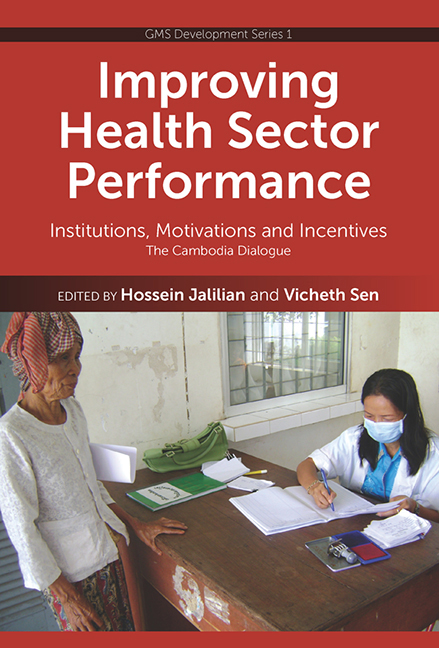 Improving Health Sector Performance
Improving Health Sector Performance from Part II - Organizational Arrangements: Purchasing Health Services
Published online by Cambridge University Press: 21 October 2015
AIMS OF THIS PAPER
Under the theme, “health sector institutions”, this chapter focuses on new arrangements for the management of health districts in Cambodia, called Special Operating Agencies (SOAs). SOAs are a form of internal contracting recently initiated as part of the government's wider public sector reform. The health outcomes of Cambodians are poor. The move to SOAs deserves special attention as an attempt to tackle inefficiency in health service delivery, improve the quality of health services, increase access to and utilization of services, and bring about better health outcomes. It is therefore important to devise an approach to assess whether the new model actually delivers the results that were intended. The original paper on which this chapter is based constitutes a first attempt to make a theoretical and practical description of the move to SOAs. It analyses the concept of contracting, describes the arrangements for SOAs, and proposes an approach to evaluate them. The paper draws on previous experience with the contracting in and contracting out (external contracting) of health services in Cambodia. We develop a framework for the evaluation of SOAs based on an assessment of their additional costs and benefits compared with the standard form of health service delivery administration through the Ministry of Health (MOH).
PRINCIPLES OF CONTRACTING
Since the 1980s, a New Public Management (NPM) approach has been adopted by governments across the world. New Public Management is based on the introduction of market mechanisms into the public sector with the aim of improving the efficiency of public services provision (Hood 1991). Competitive tendering, contracting, and performance-based incentives are among the core elements of this approach, which has been widely applied in the health sector. In principle, the three main elements of health care financing are revenue collection, pooling, and purchasing (WHO 2000). Contracting is a form of purchasing. Purchasing deals with the different means and methods of paying health care providers for the interventions they deliver. Purchasing should be strategic to ensure cost-effective service delivery and the achievement of health goals.
Contracting is based on the principal-agent theory (Figueras et al. 2005). The contract usually involves two parties: the principal, who wishes to secure the provision of goods or services, and who contracts the agent, who will deliver them (Perrot 2004).
To save this book to your Kindle, first ensure no-reply@cambridge.org is added to your Approved Personal Document E-mail List under your Personal Document Settings on the Manage Your Content and Devices page of your Amazon account. Then enter the ‘name’ part of your Kindle email address below. Find out more about saving to your Kindle.
Note you can select to save to either the @free.kindle.com or @kindle.com variations. ‘@free.kindle.com’ emails are free but can only be saved to your device when it is connected to wi-fi. ‘@kindle.com’ emails can be delivered even when you are not connected to wi-fi, but note that service fees apply.
Find out more about the Kindle Personal Document Service.
To save content items to your account, please confirm that you agree to abide by our usage policies. If this is the first time you use this feature, you will be asked to authorise Cambridge Core to connect with your account. Find out more about saving content to Dropbox.
To save content items to your account, please confirm that you agree to abide by our usage policies. If this is the first time you use this feature, you will be asked to authorise Cambridge Core to connect with your account. Find out more about saving content to Google Drive.